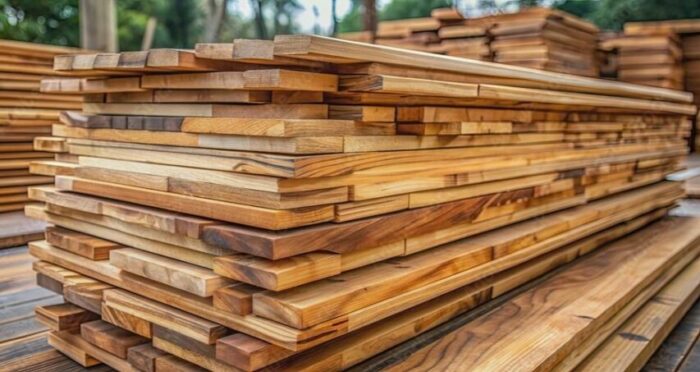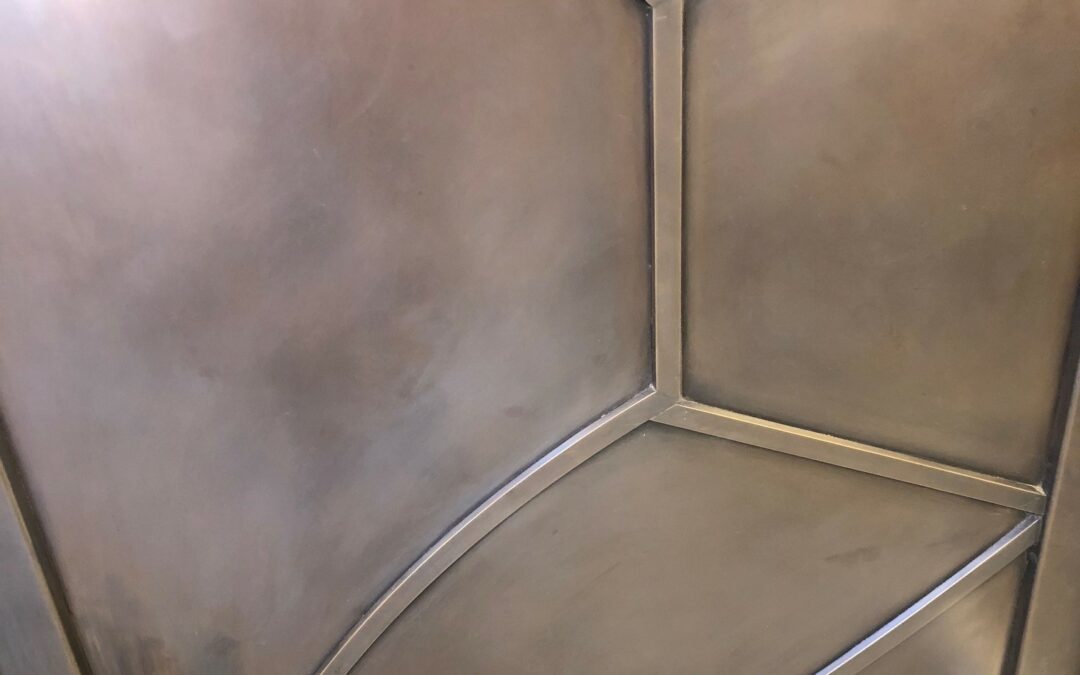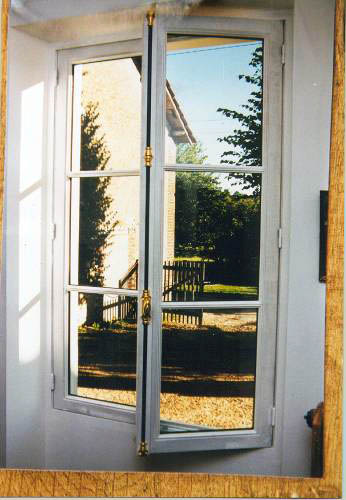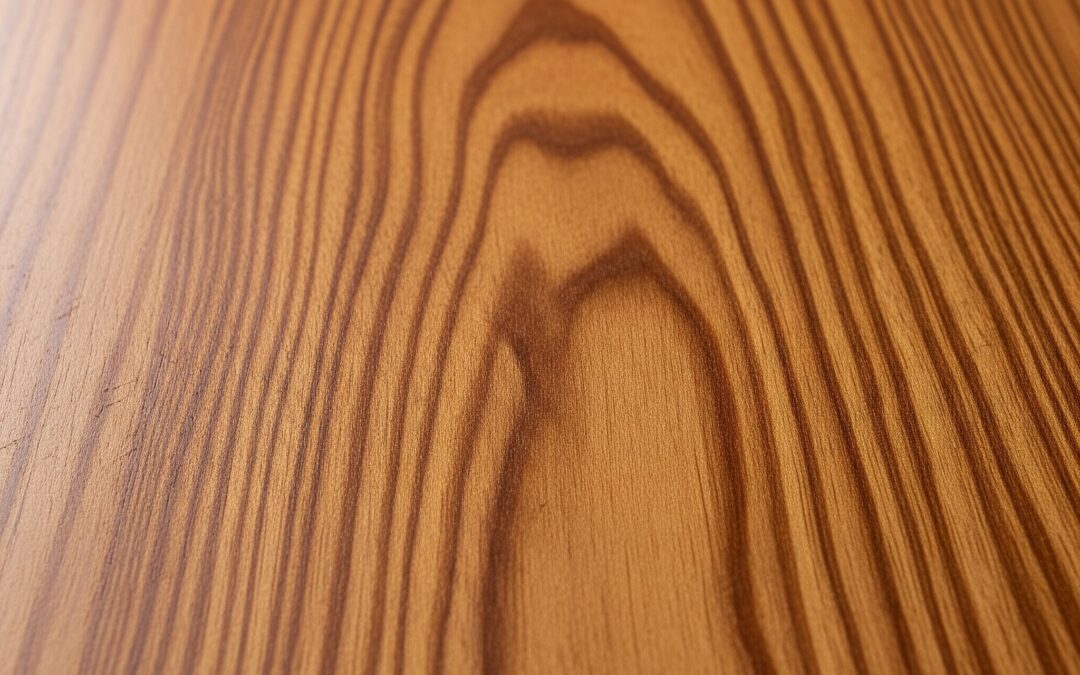Introduction
Windows are more than mere openings; they are integral to a building’s character, influencing both its aesthetic appeal and functional performance. Discerning homeowners and visionary architects consistently seek fenestration solutions that transcend basic utility, demanding a harmonious blend of timeless beauty, unparalleled performance, and responsible sourcing. The selection of materials, therefore, becomes a pivotal decision in realizing these sophisticated demands.
Chablais European Windows stands as a distinguished leader in this high-end architectural segment. The company is renowned for its unwavering commitment to exquisite craftsmanship and the strategic selection of materials that embody excellence in every detail. Chablais specializes in custom-made European-style wood windows and doors, offering bespoke solutions with a global reach.
At the heart of Chablais’s premium offerings lies a deliberate and strategic choice: Accoya wood. This material serves as a foundational component for their high-performance European windows. Accoya represents a transformative advancement in timber technology, positioning itself as wood reimagined for the demands of the modern era. The alignment between Chablais’s brand values—which include a deep passion for wood, a focus on custom design, and a commitment to life-cycle sustainability for discerning clients—and Accoya’s inherent attributes is profound. Accoya is recognized for its sustainable sourcing, long-lasting nature, minimal maintenance requirements, non-toxic composition, and even its carbon-negative footprint over its lifecycle. This congruence indicates a purposeful material selection that directly reinforces and validates Chablais’s brand promises, providing a tangible manifestation of their core values. This report will delve into the benefits of Accoya and the synergy it creates with Chablais’s expertise, demonstrating why this combination offers an unparalleled solution for architectural fenestration.
Chablais European Windows: A Legacy of Craftsmanship and Innovation
Chablais European Windows has established itself as a preeminent provider of custom-made European-style wood windows and doors. The company’s heritage is deeply rooted in the traditions of the French Alps, a region historically recognized as a center for “old world” craftsmen and design. Founded by fenestration specialists and artisans, Chablais seamlessly integrates this rich legacy with modern manufacturing capabilities. Their products are meticulously crafted in a state-of-the-art European factory, ensuring that time-honored techniques are enhanced by contemporary precision. This blend of foundational craftsmanship and technological advancement positions Chablais as a forward-thinking entity that deeply respects its origins while embracing innovation to deliver superior products. This approach assures clients that their windows are crafted with both artistic integrity and scientific precision.
Unique Selling Propositions
Chablais European Windows distinguishes itself through several key attributes that underscore its commitment to excellence and client satisfaction:
-
- Unparalleled Customization and Design Expertise: Chablais excels in handling complex architectural designs, offering custom production for virtually any rough opening, including bespoke shapes such as elliptical, round top, and oval windows. They are open to exploring various wood species to match a client’s specific vision.
- Selection of Premium Materials: A hallmark of Chablais’s offerings is its beautiful array of material options, including 100% wood, elegant aluminum clad, and sophisticated bronze clad exteriors. The wood used is meticulously hand-selected by French specialists, encompassing numerous species such as Malaysian Meranti (from the Mahogany family), Oak, Pine, Larch, Spruce, Eucalyptus, and Niangon.
- Robust Durability and Proven Performance: Chablais products are engineered for “life-cycle sustainability” and undergo rigorous testing for “harshest environments,” demonstrating exceptional reliability. Their advanced 3-step weather-stripping systems contribute to some of the lowest air-infiltration rates available, ensuring superior energy efficiency.
- Global Reach and Comprehensive Service: Chablais provides worldwide delivery and end-to-end service, from initial consultation to professional installation and project management.
- Specialized Restoration Solutions: Chablais also specializes in restoration solutions for historical buildings, seamlessly integrating replacement windows to match original architecture and preserve historical integrity.
Target Audience
Chablais European Windows caters to a sophisticated and diverse clientele. This includes discerning homeowners who seek enduring quality and aesthetic refinement for their residences, as well as visionary architects who require precision-engineered solutions for complex designs. The company serves both professional clients and individuals, extending its expertise across residential, multi-family, commercial, and historical projects.
The Unmatched Advantages of European Wood Windows
The inherent superiorities of European window design and construction provide a foundational understanding of why Chablais’s focus on this style, particularly when combined with advanced materials like Accoya, offers a distinct advantage in the market.
Superior Energy Efficiency
European windows are engineered for exceptional thermal performance, featuring multi-chambered frames, high-performance glazing, and inert gas fills. This design significantly reduces heat transfer, leading to remarkably low U-values and substantial reductions in energy bills, potentially up to 80% compared to standard American windows. They can easily meet stringent energy efficiency standards like Passive House certification.
Exceptional Durability and Dimensional Stability
Constructed from high-quality materials, European windows are less prone to deterioration, warping, or damage, ensuring a significantly longer lifespan. Their superior stability minimizes issues like swelling and jamming, guaranteeing smooth operation.
Advanced Security Features
A standard multi-point locking system secures European windows at multiple points, providing significantly enhanced security against forced entry.
Versatile Functionality
The popular tilt-and-turn mechanism allows windows to tilt inwards for secure ventilation or swing fully open for easy cleaning and emergency egress, offering key versatility.
Reduced Maintenance and Long-Term Cost Savings
Designed for minimal upkeep, European windows rarely require frequent caulking or weather-stripping. Their high thermal performance reduces HVAC workload, leading to lower energy bills. This inherent longevity and reduced energy consumption make them a highly cost-effective, long-term investment.
Comparison to American Windows
European windows generally outperform traditional American windows in energy efficiency, functionality, security, and durability. While high-performance American windows exist, European options can sometimes be more affordable when sourced directly, offering superior value.
Accoya Wood: Reimagining Timber for the Modern Age
This section introduces Accoya wood as a groundbreaking material, elucidating the scientific principles behind its transformation and explaining why it represents a significant advancement for high-performance window applications.
What is Accoya Wood?
Accoya wood is a revolutionary type of modified timber, produced through a proprietary chemical modification process known as acetylation. Accoya is derived from fast-growing, sustainably sourced radiata pine trees. These trees are transported to dedicated production facilities in the Netherlands, where they undergo the transformative acetylation process.
The Acetylation Process Explained
The core of the Accoya modification process involves treating the wood with acetic anhydride, a non-toxic compound derived from acetic acid, which naturally occurs in wood. This treatment occurs in specialized stainless steel reactors under controlled conditions of pressure or vacuum and heat, typically around 120 °C.
The molecular transformation that occurs is permanent and profound. Acetylation alters the wood’s chemical composition by converting the free hydroxyl (-OH) groups within the wood’s cellular walls (specifically in lignin and hemicelluloses) into acetyl groups. This chemical change effectively “locks” the cellular walls, drastically reducing the wood’s ability to absorb water by an impressive 80-90%. This modification is achieved without the use of toxic substances. A final distillation step ensures that the wood is essentially free from acetic acid odors, preventing any undesirable release from the final product.1 For high-strength wood, a minimum acetylation degree of 20-22% is required, a metric that can be assessed by the Weight Percent Gain (WPG) after acetylation. This permanent chemical change positively affects various mechanical and physical properties of the wood, significantly enhancing its resistance to degradation by insects and microorganisms.
This process represents a sophisticated paradox: a profound scientific enhancement that maintains the wood’s natural essence and safety. The deep, fundamental change achieved through acetylation, while described as a chemical modification, results in a product that remains “natural wood” and is produced via a “non-toxic” process where “nothing is added to the wood that does not already naturally occur in it”. This “invisible transformation” yields visible, superior results. This approach addresses potential skepticism about “modified wood” by emphasizing its natural origins and the non-toxic, yet highly effective, scientific process. It positions Accoya as a marvel of sustainable engineering that respects and enhances nature, appealing to clients who desire both authentic wood aesthetics and cutting-edge performance without compromise on health or environmental safety.
Accoya Wood: A Comparative Advantage for European Windows
The following table provides a clear, data-driven visual comparison that unequivocally demonstrates Accoya’s superior performance across key metrics relevant to window applications, thereby substantiating its claim as an ultimate choice for high-performance fenestration.
Why Accoya is the Ultimate Choice for Chablais European Windows
Accoya wood’s specific performance advantages directly contribute to the superior quality and longevity of Chablais’s custom European windows.
Unrivaled Durability
Accoya proudly achieves Class 1 durability (EN350), which is the highest possible rating, demonstrating its exceptional resistance to decay. This performance matches or even far exceeds that of commonly used tropical hardwoods like oak, iroko, sapele, utile, and meranti. It comes with an impressive 50-year above-ground warranty and an expected service life of 77 to 90 years, significantly outperforming not only regular timber but also alternatives like aluminum and PVC windows. The acetylation process renders Accoya virtually rot-proof and highly resistant to biological attacks from fungi and wood-boring insects, including termites, as it becomes indigestible to them.4 This extreme durability directly aligns with Chablais’s core promise of products “built for life-cycle sustainability” and rigorously “tested for the harshest environment,” ensuring that their custom windows will truly last for generations.
Exceptional Dimensional Stability
Due to the acetylation process drastically reducing water absorption, Accoya exhibits superior dimensional stability, with swelling and shrinkage reduced by at least 75% compared to other wood species.4 This stability is crucial for windows, ensuring that Chablais’s custom creations will not swell, twist, warp, or jam, allowing them to open and close effortlessly year-round, regardless of humidity or temperature fluctuations. The reduced movement of Accoya wood provides a far more stable surface for coatings. This means that paints, stains, and film-forming coatings adhere better and last significantly longer, dramatically extending maintenance intervals and keeping the windows looking pristine for many years. The combined benefits of Accoya – its unparalleled durability, exceptional dimensional stability, and superior coating adhesion leading to low maintenance – directly translate into a significantly longer product lifespan and a drastic reduction in the need for repairs, replacements, or frequent upkeep. This transforms the value proposition from merely “benefits” to “protection of investment.” For a high-value custom product like European windows, the initial cost, even if premium, is amortized over a much longer, trouble-free period, thereby reducing the effective annual cost and maximizing the return on investment. This appeals directly to the discerning client who views their home as a long-term asset, positioning Chablais’s Accoya windows not just as a beautiful addition, but as a wise, long-term financial decision that contributes to the enduring value of their property and minimizes future liabilities and ongoing expenses.
Superior Thermal Performance
Accoya timber is inherently insulating, offering improved thermal performance compared to commonly used hardwood (30% superior) and softwood (8% superior) species. Its thermal insulation properties are superior to many non-wood materials like PVC, aluminum, and concrete, making it an optimal choice for creating highly energy-efficient and climate-resilient buildings. This directly translates to reduced heat loss in winter and heat gain in summer, leading to lower energy bills.3 Accoya is regularly used to achieve top-tier A-rated performance under rigorous programs like the UK’s BFRC Window Energy Rating Program, demonstrating its contribution to superior energy performance.5 This directly supports Chablais’s commitment to delivering windows with “some of the lowest air-infiltration rates available,” enhancing the overall energy efficiency and comfort of the living space.
Low Maintenance
The exceptional dimensional stability of Accoya provides an ideal, stable surface for coatings. This ensures that any paint or film-forming coating applied to Chablais’s windows will stand the test of time, resisting cracking, peeling, and blistering.5 The result is significantly less frequent repainting and reduced overall maintenance costs and effort for the homeowner, allowing them to enjoy the beauty of their windows with minimal upkeep.
Sustainability Woven into Every Fiber: Accoya’s Environmental Credentials
Accoya’s impressive environmental profile reinforces Chablais’s deep commitment to sustainable building practices and responsible material selection.
Sustainably Sourced
Accoya wood is produced from fast-growing, abundantly available radiata pine trees. These trees are sourced exclusively from FSC® certified forests, ensuring responsible forest management, transparency in the supply chain, and preventing deforestation of slow-growing or endangered hardwoods.
Non-Toxic Manufacturing and End-Product
The acetylation process is inherently non-toxic and adds nothing to the wood that does not already naturally occur within it. The final Accoya product is 100% recyclable and non-toxic, meaning it can be safely composted or even transformed into biomass briquettes for renewable energy generation at its end-of-life, unlike many composite materials.
Carbon Negative Over Lifecycle
Accoya plays a unique role as a ‘carbon sink.’ By significantly prolonging the useful life of timber, Accoya effectively locks in atmospheric carbon for an extended period. It boasts remarkably lower lifecycle carbon emissions compared to many non-renewable building materials and has been assessed to be carbon neutral or even carbon negative over its full lifecycle, making it an active contributor to a more sustainable built environment.3 Many building materials are marketed as “green” by being less harmful or having a reduced environmental footprint. However, Accoya goes a significant step further by actively contributing positively to environmental remediation through CO2 sequestration. This elevates its environmental performance beyond mere compliance or reduction to a level of active benefit. This allows Chablais to position itself and Accoya as leaders in environmental stewardship, not just participants, appealing to clients who are deeply committed to sustainability and seek to make a tangible positive impact through their building choices.
Contribution to the Circular Economy
Accoya’s extended lifespan reduces the need for early replacement, thereby protecting forest resources and promoting a more circular economy model. Its recyclability and non-toxic nature at end-of-life further exemplify its alignment with circular economy principles, maximizing material utilization.
Independent Certifications and Assessments
Accoya’s high standards are independently validated and meet or exceed major globally recognized sustainability certifications. This provides assurance to customers that its processes and products are managed responsibly.
Accoya Wood: A Benchmark in Sustainable Building Materials – Key Certifications
This table provides a clear, comprehensive, and authoritative overview of Accoya’s extensive and independently validated environmental certifications. This serves to build trust, demonstrate rigorous commitment to sustainability, and cater to the needs of architects and clients who prioritize certified green building materials.
The Chablais & Accoya Synergy: Windows Built for Generations
The synthesis of Chablais’s meticulous craftsmanship with Accoya’s material innovation yields an unparalleled product, setting a new standard for architectural fenestration.
Enhancing Chablais’s Core Promises
Accoya’s unrivaled durability, exceptional dimensional stability, and inherent rot and insect resistance directly amplify Chablais’s foundational promises. Specifically, Accoya’s performance ensures that Chablais’s custom windows truly embody “life-cycle sustainability” and are robust enough to withstand “the harshest environment” , living up to their rigorous testing protocols. This synergy means Chablais can confidently offer windows that are not just aesthetically pleasing, but genuinely built to last for generations.
A Commitment to Uncompromising Excellence
Chablais’s decision to integrate Accoya wood into its offerings is a testament to its unwavering dedication to providing the absolute best materials available for its custom, high-performance European windows. This choice showcases a forward-thinking approach, seamlessly blending time-honored traditional craftsmanship with cutting-edge material science and innovation.
Preserving Aesthetic Integrity
Accoya’s superior stability and enhanced coating adhesion ensure that the exquisite, custom finishes meticulously applied by Chablais’s skilled craftsmen will retain their pristine appearance for significantly longer periods. This crucial benefit means that the aesthetic integrity and original vision of the architectural design are preserved against environmental wear, maintaining the beauty and value of the property over time. Chablais specializes in “custom made windows and doors” and aims to “personalize your estate”.1 These bespoke architectural elements represent a significant investment in both aesthetic vision and functional performance. Accoya’s properties ensure these custom designs will not only perform optimally but will also maintain their aesthetic integrity and functional precision for decades. This goes beyond just the window lasting; it is about the design lasting and the investment holding its value, effectively “future-proofing” the design and investment. This appeals powerfully to clients who view their home as a long-term artistic and functional statement, assuring them that their unique, high-end design choices will endure the test of time and weather, offering lasting satisfaction and protecting the value of their property’s bespoke elements.
Investing in Lasting Value and Peace of Mind
The comprehensive value proposition for Chablais’s target audience is rooted in the long-term benefits derived from choosing Accoya-based European windows.
Holistic Benefits for Homeowners and Architects
- Significantly Reduced Energy Costs: The superior thermal insulation provided by Accoya wood, combined with the advanced design of European windows, translates directly into substantially lower heating and cooling bills year-round, offering tangible financial savings.
- Minimal Maintenance and Effort: Accoya’s exceptional stability and durability lead to less frequent repainting and significantly fewer repairs, freeing up homeowners’ time and saving them money over the extensive lifespan of the windows.
- Enhanced Security and Safety: The robust multi-point locking systems offer peace of mind, providing a higher level of protection against forced entry.
- Exceptional Durability and Longevity: The guaranteed performance for decades underscores that these windows are a truly long-term investment that protects the value and integrity of the property.
- A Beautiful, Sustainable Investment: The natural beauty and warmth of wood, enhanced by Accoya’s transformative properties and impeccable environmental credentials, offers a product that is not only aesthetically stunning but also profoundly ecologically responsible.
The Luxury of Peace of Mind
The cumulative advantages of Accoya wood and European window design—including durability, low maintenance, superior energy efficiency, and enhanced security—culminate in a significant reduction in the typical concerns and ongoing efforts associated with home ownership. This extends beyond mere financial savings; it encompasses the intangible value of reduced stress, fewer disruptions for repairs, and consistent comfort. For the luxury market, time and peace of mind are paramount. Chablais offers a solution where the windows perform flawlessly in the background, allowing the homeowner to focus on enjoying their space without constant upkeep worries. This positions Chablais’s Accoya windows as a premium solution that delivers not just performance, but also the invaluable luxury of long-term comfort, beauty, and freedom from typical homeowner headaches, reinforcing the overall value proposition.
Conclusion & Your Next Step
Chablais European Windows stands as the premier choice for custom European wood windows. This leadership is defined by an unwavering commitment to exceptional craftsmanship, continuous innovation, and the transformative power of Accoya wood. The deliberate integration of Accoya into Chablais’s offerings underscores a dedication to providing products that are not only aesthetically superior but also engineered for unparalleled performance and environmental responsibility.
For those seeking fenestration solutions that blend timeless elegance with cutting-edge material science, Chablais European Windows invites further exploration. Readers are encouraged to visit the Chablais European Windows website (chablaiseuropeanwindows.com) to delve deeper into their extensive portfolio of custom European window and door solutions. For a personalized consultation, Chablais extends a direct invitation to contact their expert team. This team is ready to discuss custom design inquiries, address specific project needs, and guide clients through the bespoke process. Chablais’s approach reflects a partnership in vision, moving beyond a simple product sale to establish the company as a trusted collaborator dedicated to bringing the client’s unique architectural aspirations to life.




